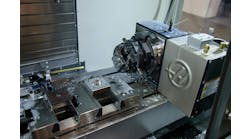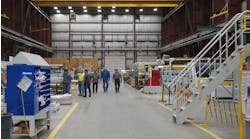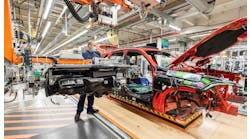The Other Reason to Keep Supply Chain Leadership Rooted in Your C-Suite
There are two primary reasons to keep supply chain leadership in the strategic, holistic lens of the C-suite rather than your purchasing department.
You know the first – the total cost of ownership (TCO) is far more important than seeking the lowest per-unit cost. Focusing on costs puts you at risk of constantly running in emergency mode and reacting to the fragile nature of supply chains. Three major disruptions show the peril of this approach: the loss of suppliers during the Great Recession in 2008; a tsunami in Japan that disrupted the automotive industry; and the pandemic’s effects on numerous supplies.
Historically, during these crises, supply chain management becomes strategic – until the emergency fades. As manufacturers adjust and resolve issues following the pandemic, supply chain leadership once again seems to be leaving the C-suite and migrating to purchasing departments. In the 2021 Wisconsin Manufacturing Report, commissioned by the Wisconsin Center for Manufacturing and Productivity (WCMP) in collaboration with WMEP Manufacturing Solutions (WMEP) and the University of Wisconsin-Stout Manufacturing Outreach Center (MOC), 64 percent of the respondents cited supply chain issues as a primary concern. That concern fell 21 percentage points in 2023, indicating a return to the supply chain comfort zone.
The other reason that is important to keep your C-Suite focused on supply chain management is maintaining steady supplies of competitive materials and services. Approached correctly, dynamic supply chains serve as an effective conduit for operational improvement and technological innovations. Leveraging your supply chain relationships will make you more resilient and competitive.
Focusing on Supply Chains Will Help You Create More Value
Focusing management attention on key constraints in your supply chain will unlock efficiency, productivity, and profitability gains in your operations. Address the constraints that may be preventing your firm from doing higher-margin work or reaching new customers or markets and you will find your company on a profitable growth trajectory. A proactive approach to your supply chain puts you in a better position to be a strong link in others’ supply chains.
Proactively managing your constraints means engaging the power of relationships in the supply chain. Perhaps you need a supplier to turn around your orders in half the time for you to grow your business. You can wait two years for them to figure it out. Alternatively, you should share insights and expertise with them to help them resolve the issue in a few months.
Working with suppliers by sharing insights, coaching, and managing up creates paths to success for each of you. Supply chains work best when the key members work together to solve competitive challenges and find new ways to grow markets. That approach requires the strategic nuance of a C-suite leader and not just the price cut and delivery demand focuses of a purchasing department employee.
Supplier Relationship Management Catalyzes New Technology Adoption and Product Improvements
New technology and product improvements are at the heart of supplier relationship management (SRM). The supply chain creates additional value through shared innovation that capitalizes on the unique value of each member of the supply chain. For example, larger companies have the resources and wherewithal to experiment with different approaches. In contrast, smaller companies can be more nimble and move quickly. Combining the two capabilities can speed up and lower the risk of the iteration, thereby improving the development process for the entire supply chain.
These relationships make both macro and micro-level changes more effective. The macro industry level changes may include adopting Industry 4.0 technologies or sorting through the ability to organize a data structure needed for artificial intelligence (AI) adoption. Micro company level changes could be production floor capabilities or the ability to quickly turn prototypes for your product development. Leveraging the individual capabilities in the supply chain can speed innovation, lower costs, and improve resilience in difficult situations. Innovation speed depends on quick iterations with effective feedback loops and clear communication.
Supplier relationships thrive when built on similar approaches to testing new processes, working together on strategic initiatives, and developing cost-saving approaches. Sharing appropriate information about your industry or your business with suppliers will build a competitive advantage for your combined supply chain.
Original Equipment Manufacturers (OEMs) invest in what works; adopting Industry 4.0 technologies is a great example. They share successes with Tier 1 suppliers, and many advances trickle down through the sales and supply chains. The reality is that most of the value in your products is created elsewhere – for example, a typical new vehicle made in the U.S. has about 30,000 parts from as many as 4,000 suppliers. Being progressive with your supply chain means leveraging it upstream and downstream.
The C-Suite Can Break Down Your Supply Chain Silos
Your C-suite takes a holistic and strategic view of supply chains and can help others at your company do the same. This mindset builds resiliency and focuses on impacts throughout your company, not just in one department.
Larger manufacturing C-suite executives have expressed a growing concern that quality issues will eventually surface with suppliers. During the COVID-19 pandemic, some suppliers reduced key staff and are yet to backfill some of these positions. This fact does not preclude the need for quality to be maintained and thus not allowed to atrophy. If your supply chain focus defaults to pricing or delivery, you may be taking on additional risk.
For example, one manufacturer awarded bonuses to their purchasing department for saving money on contracts with a supplier, yet that same supplier was sending defective parts which created issues in the operation. The C-suite might have recognized this dynamic more quickly than either purchasing or operations.
Another example is implementing newly required environmental, social, and governance (ESG) goals. If you look at these goals from a C-suite level, they lead to action that improves the company’s overall financial sustainability and not just compliance with mandated standards. There may be business synergies to pursue – a paper mill is pretreating effluent that goes to local water treatment facilities and is now suitable for use back in the paper milling process. Again, look for win-win scenarios.
Supply Chains Link Many Facets of Your Operation
Senior leaders provide the perspective for action that drives TCO lower. That perspective is the foundation for understanding how supply chains create more value and how your partners can be conduits to technology improvements and product development.
Your local MEP Center can help you overcome supply chain issues that might be hampering your company’s potential and can help you and your C-suite take advantage of the resources you need to be more competitive. Contact your local MEP Center to get started.
ABOUT THE AUTHOR
Buckley Brinkman
Buckley is the executive director and CEO of the Wisconsin Center for Manufacturing & Productivity, part of the MEP National Network. He leads the Wisconsin MEP network, which helps companies drive growth, world-class competitiveness, and performance excellence. His leadership experience includes Lean, Six Sigma, supply chain management, and turnaround execution.





